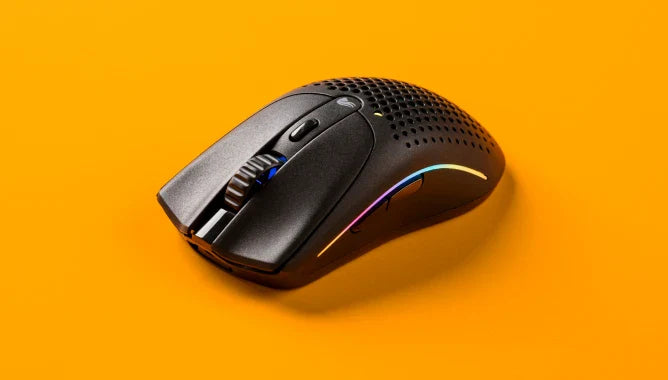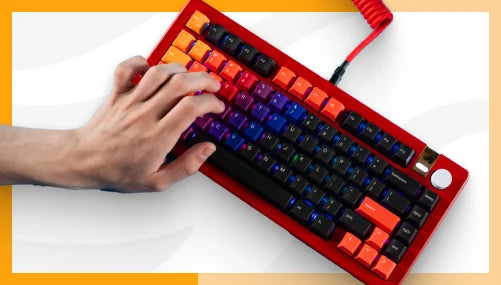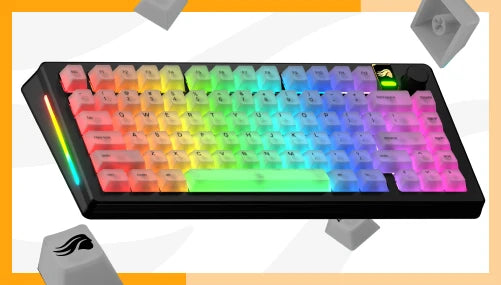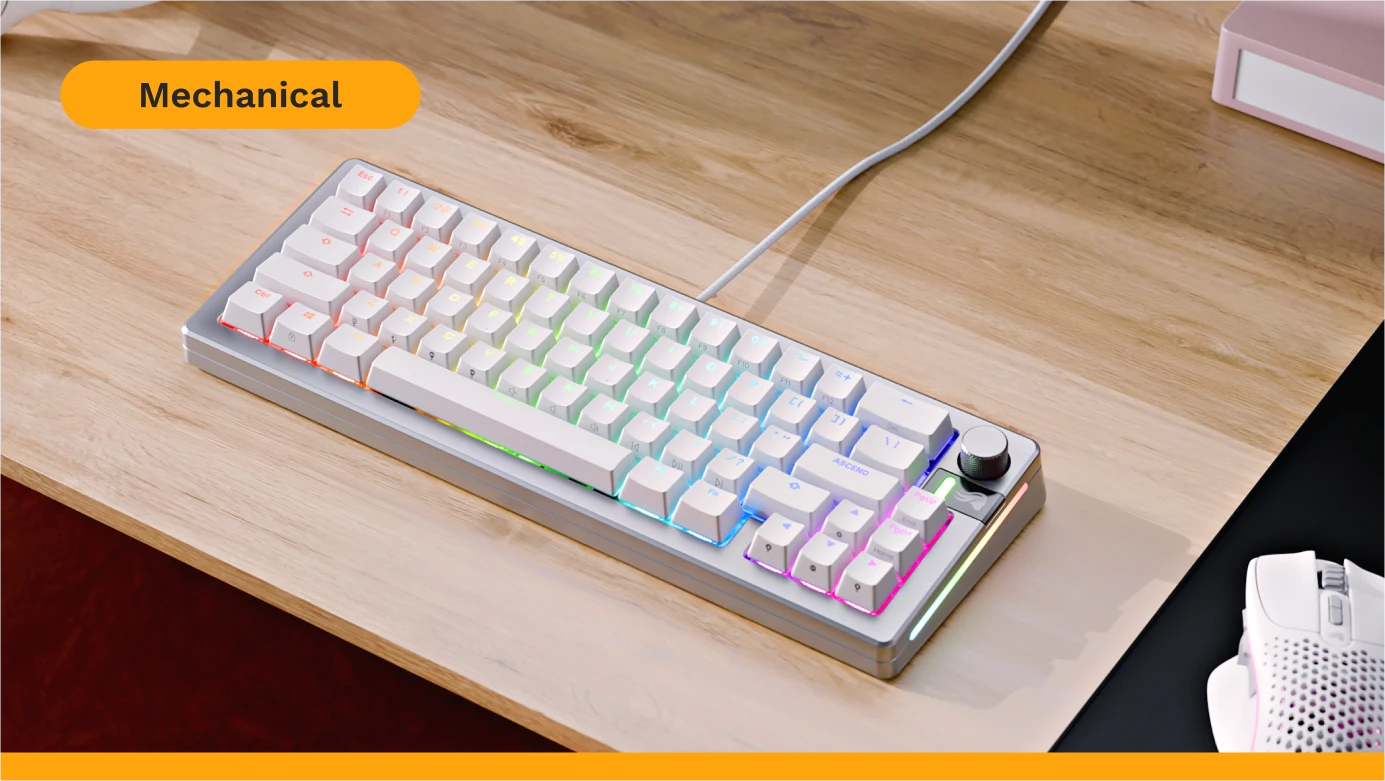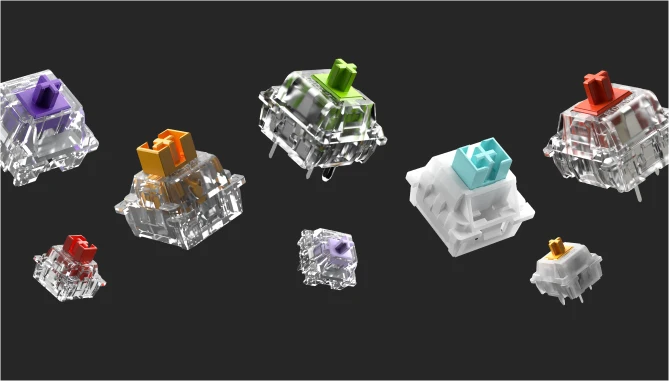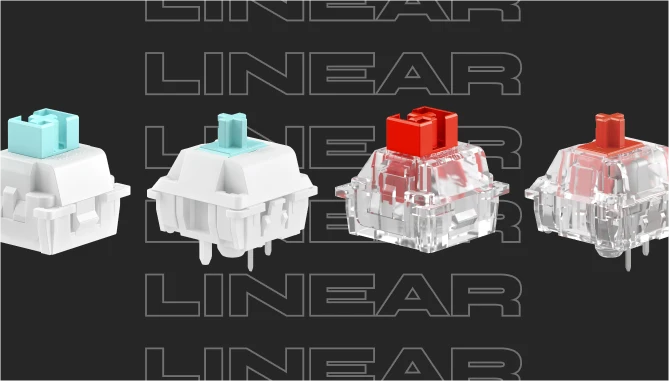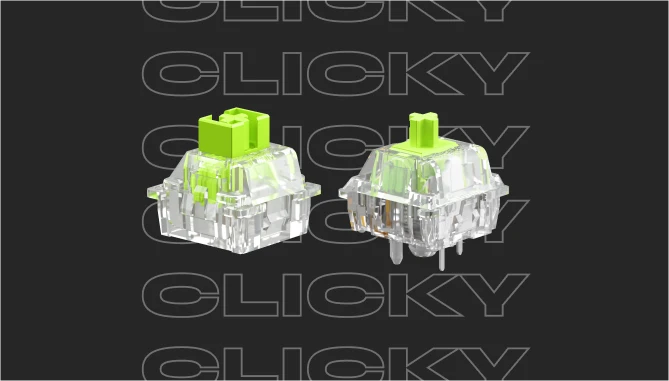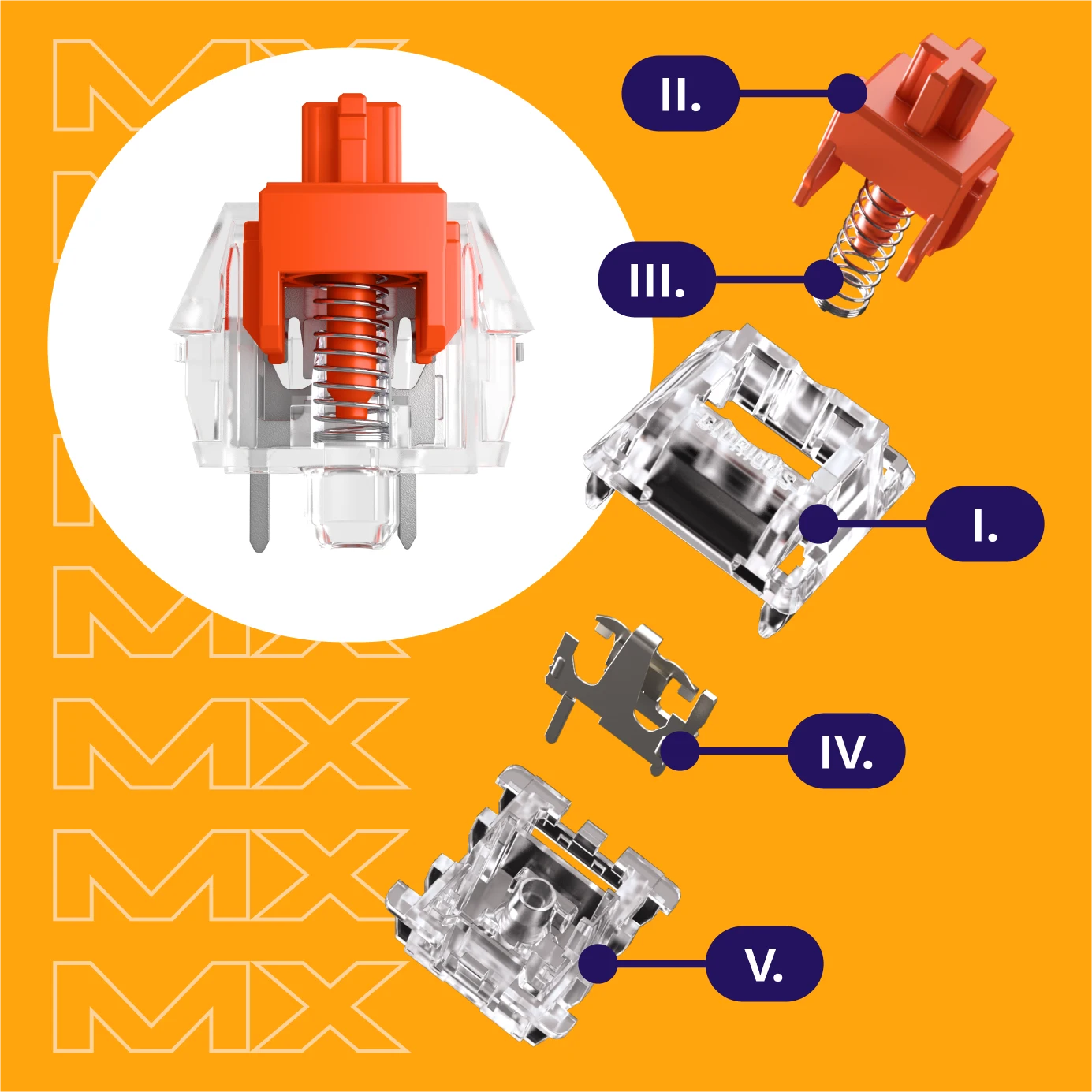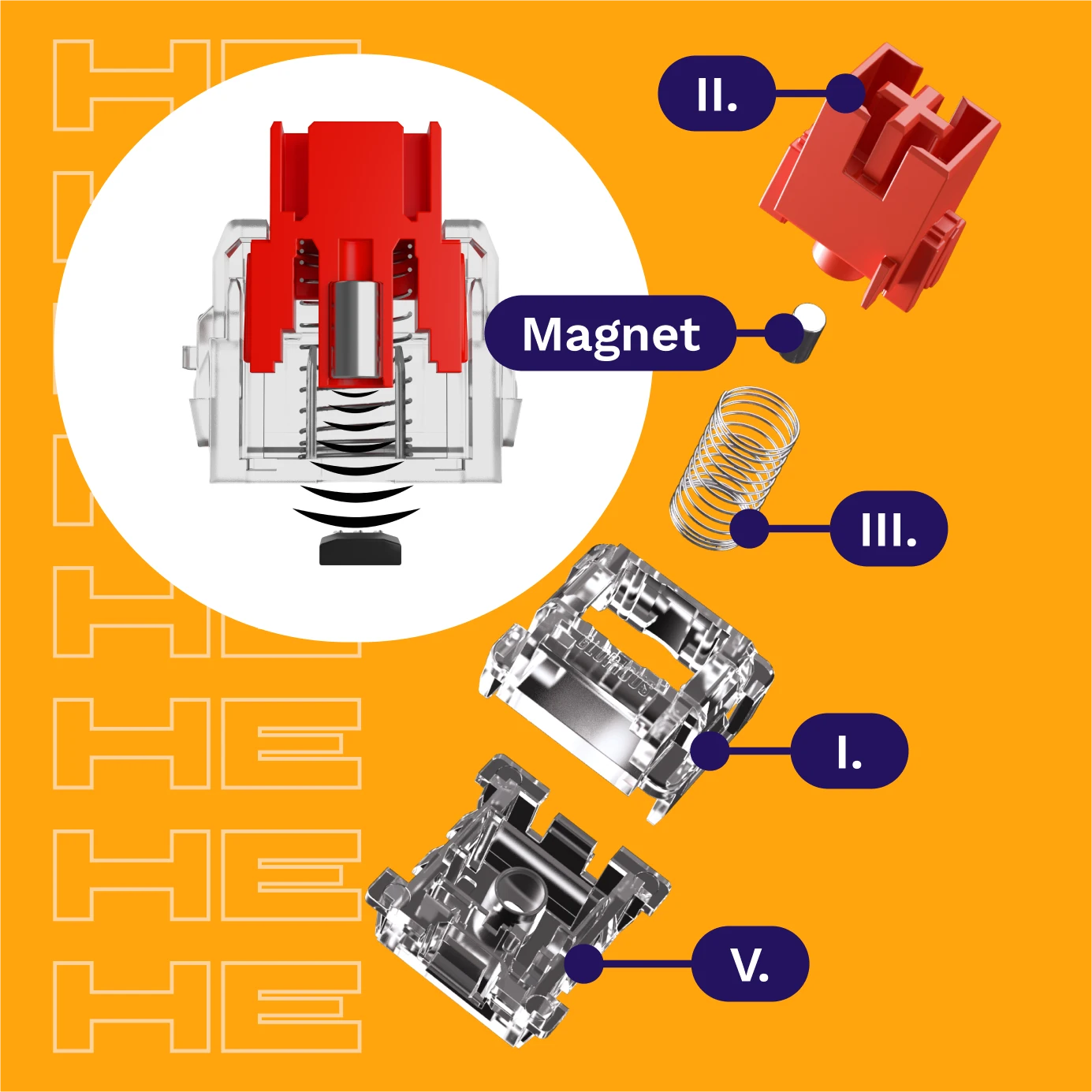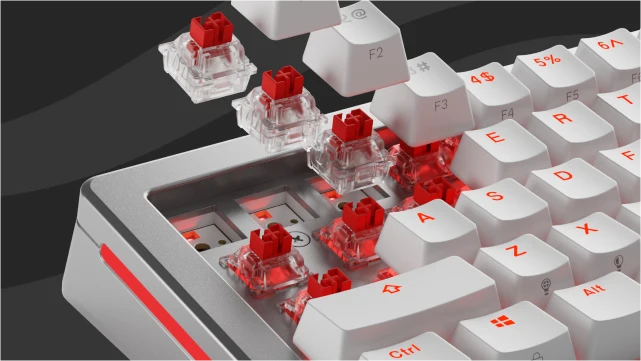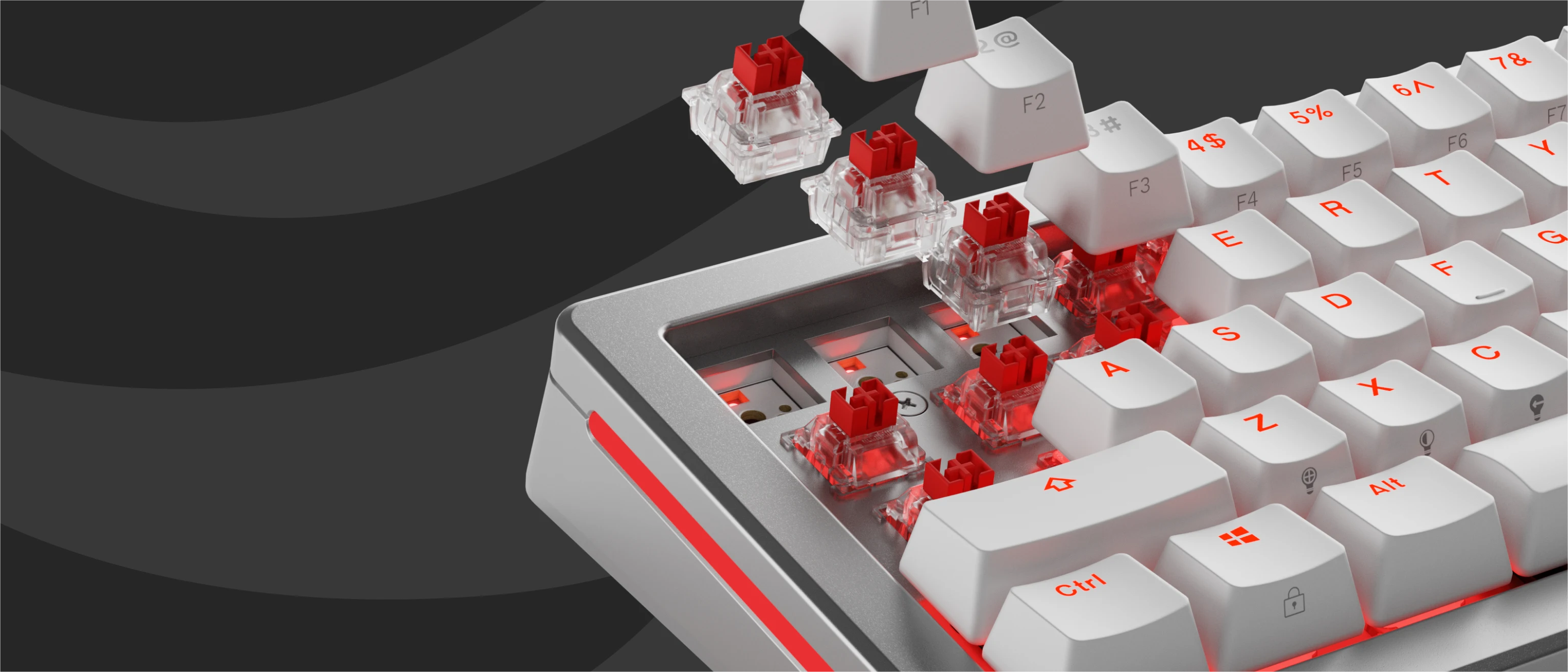
EXPLORE
Mechanical Keyboard Switch Basics
Mechanical keyboards offer better performance, customizability, and tactile feedback, making them ideal for gamers seeking precision and speed.
Mechanical Keyboards
A mechanical keyboard uses individual switches beneath the keycaps to register each press. Switches make keystrokes more precise, deliver premium acoustics, and feel satisfyingly tactile, which is why gamers, writers, and developers often prefer them. With a wide variety of switch types available, you can customize the sound and feel to suit your style perfectly.
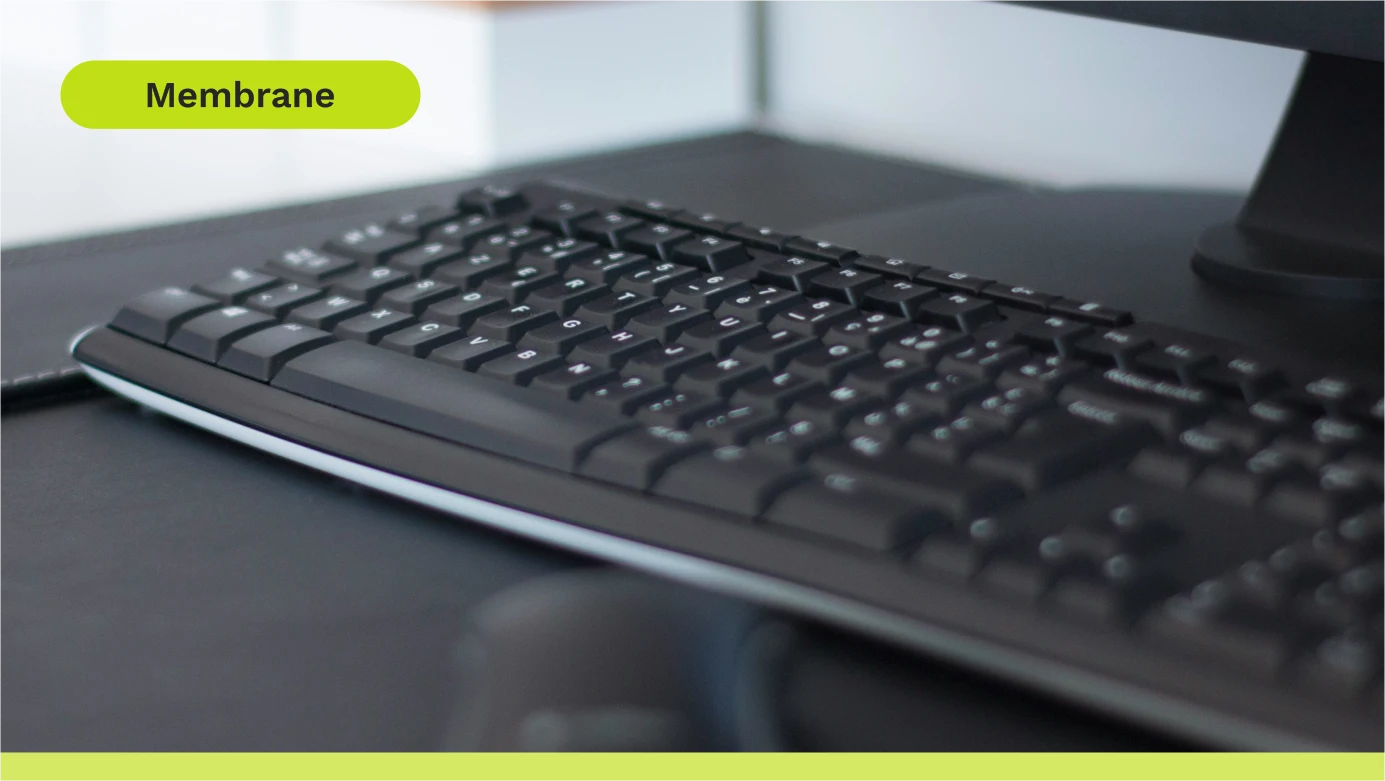
Membrane Keyboards
A membrane keyboard uses a large silicone rubber pad underneath the keys to register each press. They’re more affordable and easy to produce, which is why they’re commonly found in schools and offices. However, they lack the tactility, acoustics, and aesthetics mechanical keyboards are known for. Because there’s just rubber underneath the keycaps, keystrokes feel "mushy" and lack any key travel.
Anatomy of Mechanical Switches
Magnetic Switches
Ready to Shop Switches
What does a switch's lifespan rating mean?
Why does lubrication matter for switches?
What is "3-pin" and "5-pin" compatibility?
What do "Actuation Force" and "End Force" mean?
What is a silent switch?
